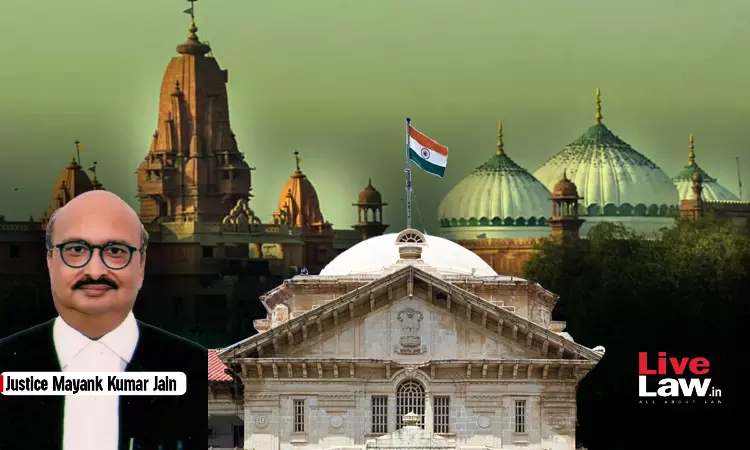- Home
- /
- High Courts
- /
- Allahabad High Court
- /
- Krishna Janmabhumi Case | Its...
Krishna Janmabhumi Case | Its 'Religious Character' To Be Determined In Trial; Govt's 1920 Notification Indicates Pre-Aurangzeb Temple Existence: Allahabad HC
Sparsh Upadhyay
1 Aug 2024 8:13 PM IST
In a significant verdict, the Allahabad High Court today DISMISSED the Order 7 Rule 11 CPC petition filed by the Mathura-based Shahi Eidgah (mosque) committee challenging the maintainability of 18 suits filed by Hindu worshipers and deity Shri Krishna Virajman, in connection with the Krishna Janmabhoomi-Shahi Eidgah Mosque dispute in Mathura. A bench of Justice Mayank Kumar Jain...
Tags
Krishna Janmabhumi CaseKrishna Janmabhumi DisputeKrishna JanmabhumiSri Krishna Janmabhumi DisputeSri Krishna Janmabhoomi DisputeSri Krishna Janmabhoomi-Shahi Idgah MosqueKrishna Janmabhoomi CaseLord Shri KrishnaSri Krishna Janmabhoomi-Shahi Idgah Mosque DisputeSri KrishnaJanm Bhumi-Shahi Idgah disputeIdgah MosqueShahi Eidgah MosqueShahi Eidgah Masjidshahi idgah mosqueKrishna Janmabhoomi-Shahi Eidgah Mosque DisputeSpecific Relief Act 1963Places of Worship ActPlaces of Worship Act 1991Places of Worship (Special Provisions) Act 1991Limitation ActLimitation Act 1963Justice Mayank Kumar JainBhagwan Shrikrishna Virajman At Katra Keshav Dev Khewat No. 255 And 7 Others vs. U.P. Sunni Central Waqf Board And 3 Others and connected matters 2024 LiveLaw (AB) 4772024 LiveLaw (AB) 477
Next Story



